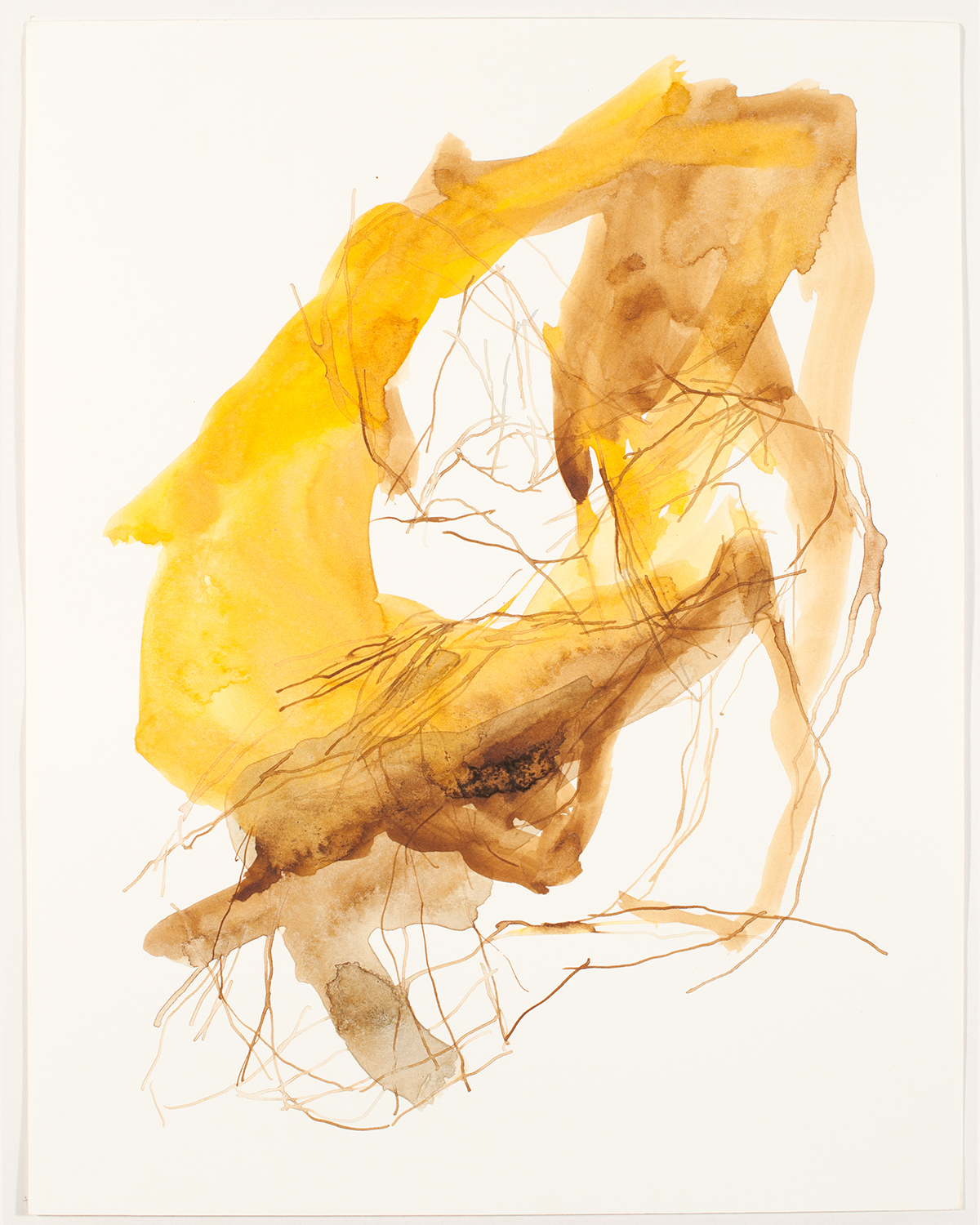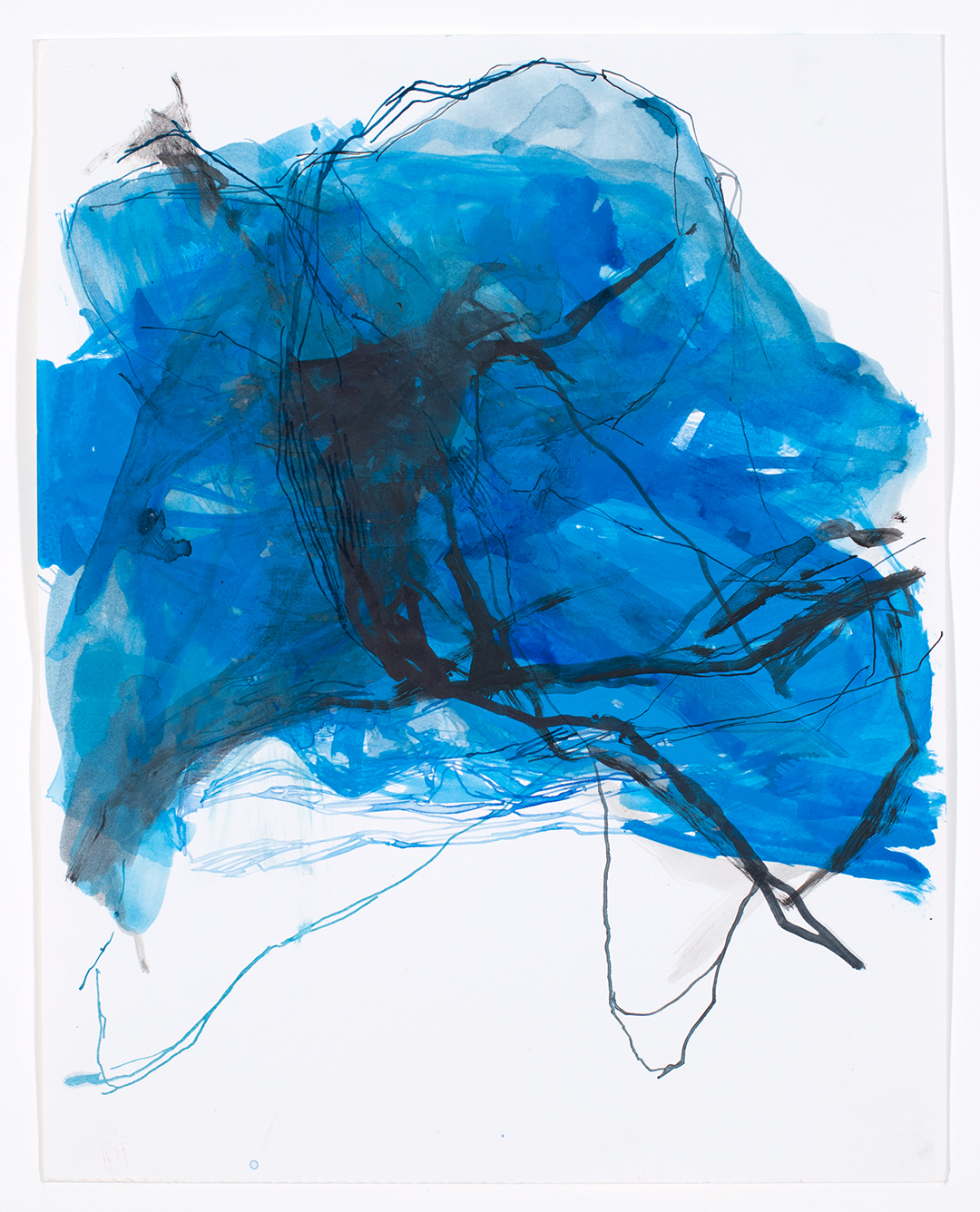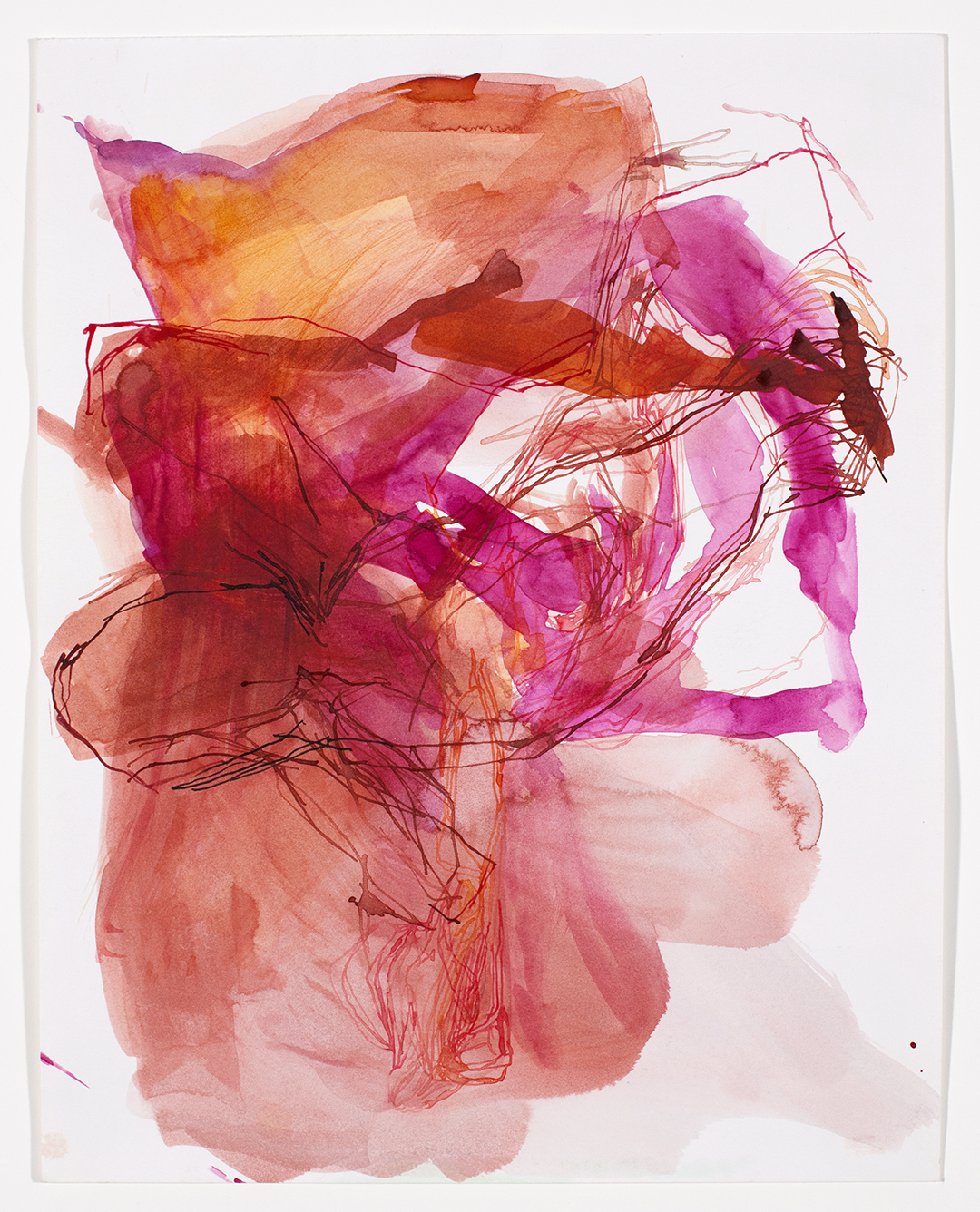Five Questions for Artist Beth Gilfilen
Beth Gilfilen
Five Questions
Other People’s Words:
“Thinly painted layers build up organically on smoothed white canvas surfaces. Lines spider indistinctly outward, branching above and around heavier masses of deeply layered transparent shapes. Biological forms ranging from forested landscapes to microscopic cells, rise to meet the viewer and just as quickly dissipate in the playful brushwork. The uniformly white ground of these paintings make them feel a lot like drawings, a comparison that the artist herself makes. But the paint here is allowed to show off its own specific qualities and the work stays grounded in the world of painting. Though amorphous, there is a clear method to Gilfilen’s process and she invites the observer to follow along. Shapes reach out to each other, yearning, like weightless arabesques in open air. The atmosphere created by Gilfilen’s paintings is curious and thoughtful, even appetizing. In a few places, paint thinned almost to nothing leaks away from deliberate brushstrokes, thirsty and wandering, highlighting the texture of the canvas and the willful nature of an artist’s materials.”
Five Questions:
Interviews in Excellence with artist Beth Gilfilen
Installation view of Gathering Moss, Hem Joints, and Rain Dove, 2018, Beth Gilfilen.
1. How do you get in the right mindset to make your work? Do you have a particular strategy?
When I first get to the studio, I will rotate the works that are unfinished in the studio; to see new relationships and determine what is working, and what doesn’t hold up. I back up and circle the room, a little vulture like, until I am ready to make a decision. I pace a lot. I normally will have works in progress, and it is good for me to get away from these for a day or two and then come back to them fresh.
If I am starting a new painting, that first touch or contact with the surface is so important, it is really about an intimacy with the mark, and the chain of events that will set off. So, I must be completely present. I don’t have music going, just quiet. I want to harness the rhythm of phrasing and intervals that only happens when I am completely aware. So I am trying to find a specific energy tied to the brain; exiting through the material. That means being in tune with where my body is in space, what I am seeing unfold as I work and what doubts and excitements are pulsing through me. I have to suspend all notions of deadlines, all artificial measures of time and pretend that the work has no start and no end. And, actually, I struggle with that notion of a finished work. I think they all exist on a continuum. That is the bigger project, building a world of painting places! I have to feel my way into it, and sustain it and be with it. Really, it is about using myself as a conduit to lose myself! I want to arrive at a place where making the work transports me, and I am outside of myself. I believe this language of painting is only interesting when the triad of maker, material and mind is completely in sync. And it takes a critical eye to see the difference.
Installation view of "Cadences," Equity Gallery, New York, NY, October 17 - December 1, 2018, Beth Gilfilen.
2. What is your favorite piece that you have made and why?
I am fond of this painting, titled Recast, it is 70 x 64 inches. It is a couple of years old, and it's not elegant or pleasant, but it evokes a rocky, eerie place to me. This painting went through many phases and I guess through my involvement with it, the space became more and more real to me. I'd like every painting to have an invented, tangible space, emerging out of the painting activity.
Recast, 70 x 64 inches, oil on canvas, 2017, Beth Gilfilen.
3. If you could hang your work next to any other artist’s work (past or present) whose work would it be? What piece in particular?
This could change daily, but I'm going to choose three paintings. These were works that resonated with me as a teen and as a child. Two I had posters of in my bedroom; Franz Marc's The Red Horses and Kandinsky's Light Picture. The third I was fortunate to experience in person; Joan Miro's Mural for the Terrace Plaza Hotel, which had a huge impression on me. These works struck me, and planted seeds in my mind of what painting might mean and what it was to me.
Joan Miro's Mural for the Terrace Plaza Hotel
4. How have you set up your work space? What in particular about your setup facilitates the way you work?
I have zones-I have my note-taking area on top of the flat files where I jot down random thoughts and my to-do list. My painting table is long-I made it from kitchen counter-top glass, so those proportions work for me. This length allows me to have a range of colors going. I have about a ten foot wall space where I work on the paintings. They are usually propped on paint cans, little chairs and folding chairs. I don’t do easels. Next to this is where is set a pile of unfinished paintings. These are rotated as I come back to each work over a length of time.
Installation view of Clay Tendon, 76 x 70 inches, oil on canvas, Beth Gilfilen.
5. How do you unplug? Is it necessary for you to do so? If so, why?
For a long time I would just work and not get away from it. I thought I had to have a strict schedule and force myself to step up to the challenge. I still do this, and I show up, whether I am tired or not feeling it; but, I give myself rewards. I get away from the work for a few days to forget about it. I get into nature, go for hikes and listen to the birds. In New York City you hear one or two birds at a time, or maybe a group of the same bird as they rest in a tree. It is stripped down, punctuating the urban noise. But when I get out of the city, I realize there are layers of bird songs, so many species; and frogs! It is so textured and dense. And the sounds bounce off of the landscape. I try to bring this back to my work; the multiplicity of voices, and their overlapping transparencies. I think everyone needs this, and I want my work to reflect this cacophony.
Studio view, July 2019, Beth Gilfilen.
Recent Exhibitions:
Solo Exhibition:
Shorthand
Reynolds Gallery,
Richmond, VA
Group Exhibitions:
Cadences
Two person exhibit with Molly Herman
Equity Gallery
New York, NY
Walking is a Way of Knowing
817 5th Ave.
Brooklyn, NY
Four Abstract Artists
Kathryn Markel Fine Arts
New York, NY
Distilled de Stijl
TW Fine Art
Brisbane, Australia
Works on Paper to Lust Over:
14 x 11 inches each
Ink on Paper











